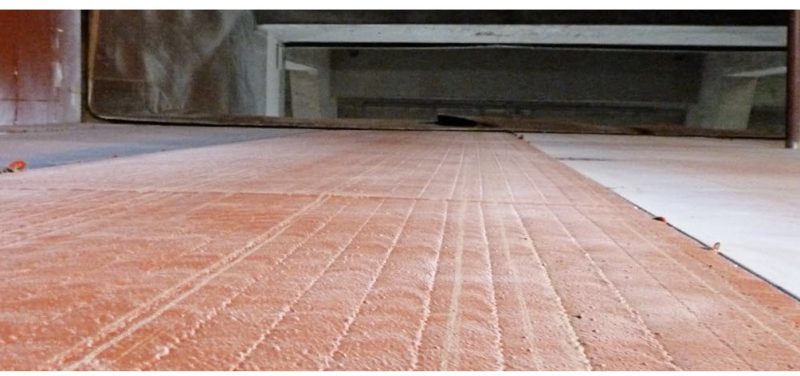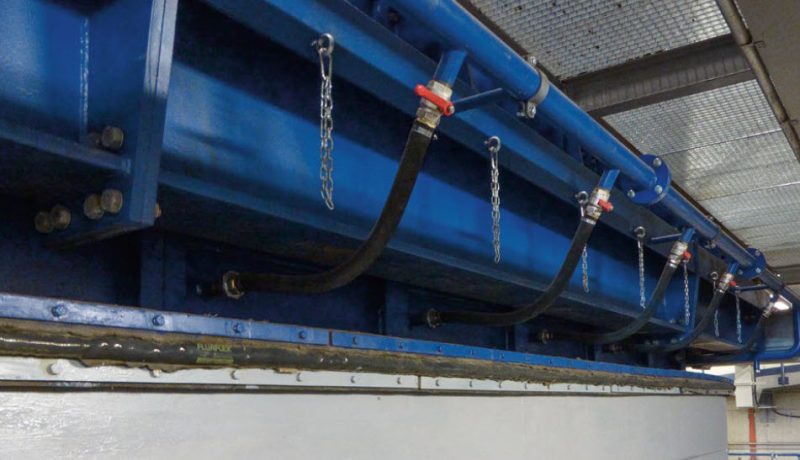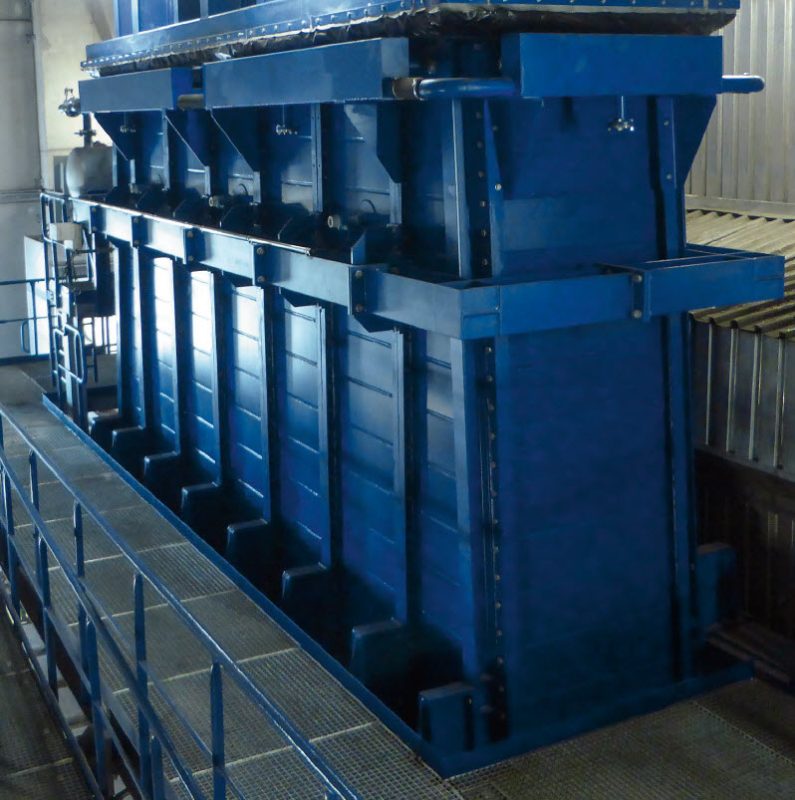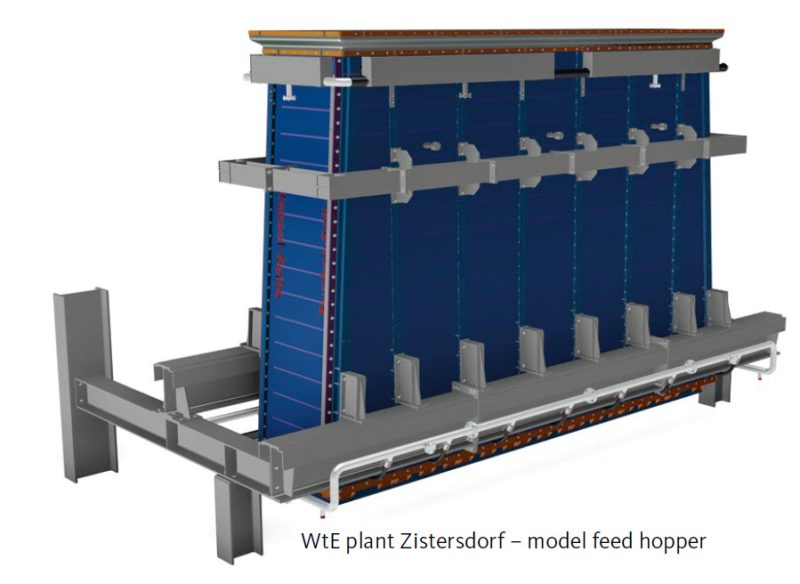Kanadevia Inova Feed Hopper
Kanadevia Inova Feed Hopper
Patented Kanadevia Inova Technology
Kanadevia Inova Feed Hopper – Patented Design for Extended Operating Periods and Low Maintenance Costs
Kanadevia Inova’s (HZI) modular feed hopper concept is designed with practical use firmly in mind, harnessing Kanadevia Inova’s wealth of experience in addressing wear and tear, maintenance costs, and troubleshooting. Its development focused on extending the lifetime with reliable and uniform water cooling, as well as shortening the erection period and reducing maintenance costs.
Structure
The Kanadevia Inova feed hopper comprises individual watercooled modules that are bolted together at the joints. Each module is mounted on the support frame, which is outside the heat-affected zone and thus not subject to any wear. The Kanadevia Inova feed hopper is incorporated in the existing steel structure, adapted in line with the specific circumstances, with a buckstay ensuring the necessary stability. The modules can also be equipped with temperature sensors if required.

WtE plant Zorbau L2 – various materials were used for the inner surfaces of the bunker (cladding with alloy 12+4 and S235JR 16mm).
Materials
The interior surfaces are made of wear-resistant materials to withstand heavy use. Each module can be customized to precisely meet the client’s requirements, ensuring optimal value for money. All welding is carried out from the reverse side to prevent wear on the inside of the hopper as a result of friction. Given that Kanadevia Inova does not use any additional protection plates, all of the modules have a continuous, smooth and directly cooled interior surface. This rules out waste jams.

WtE plant Zistersdorf – water fed in from below
Water Cooling
Water is fed into the modules from below via a circular pipeline. To keep consumption to a minimum, the water is collected at the outlets and recycled. Separate inlets ensure uniform cooling. The hopper thus boasts a very good lifetime, even in the event of a temporary increase in temperature, for example as a result of a backfire.
If damaged, each module can be shut off individually using a ball valve. This ensures that the remainder of the hopper is water-cooled, and the repair can take place during the next planned standstill.
Maintenance
The middle sections of the hopper are standard modules that are identical in construction. Experience shows that these are subject to varying levels of wear, and they can therefore be equipped with different materials. Thanks to the modular construction, in the event of damage it is no longer necessary to exchange the entire hopper. The individual modules can instead be repaired or replaced independently of each other. Furthermore, a standard middle module is stored in reserve, allowing for installation at very short notice should there be an unplanned standstill, thus ensuring even greater flexibility.
References
Zorbau (Germany) Line 2: 2013
Zorbau (Germany) Line 1: 2014
Zistersdorf (Austria) Line 1: 2015
Umea (Sweden) Line 1: 2016

WtE plant Zistersdorf (l) – erection of the modules; WtE plant Zorbau L2 (r) – inspection of the inner surfaces (cladding with alloy and S235JR) after 2 years’ running time


